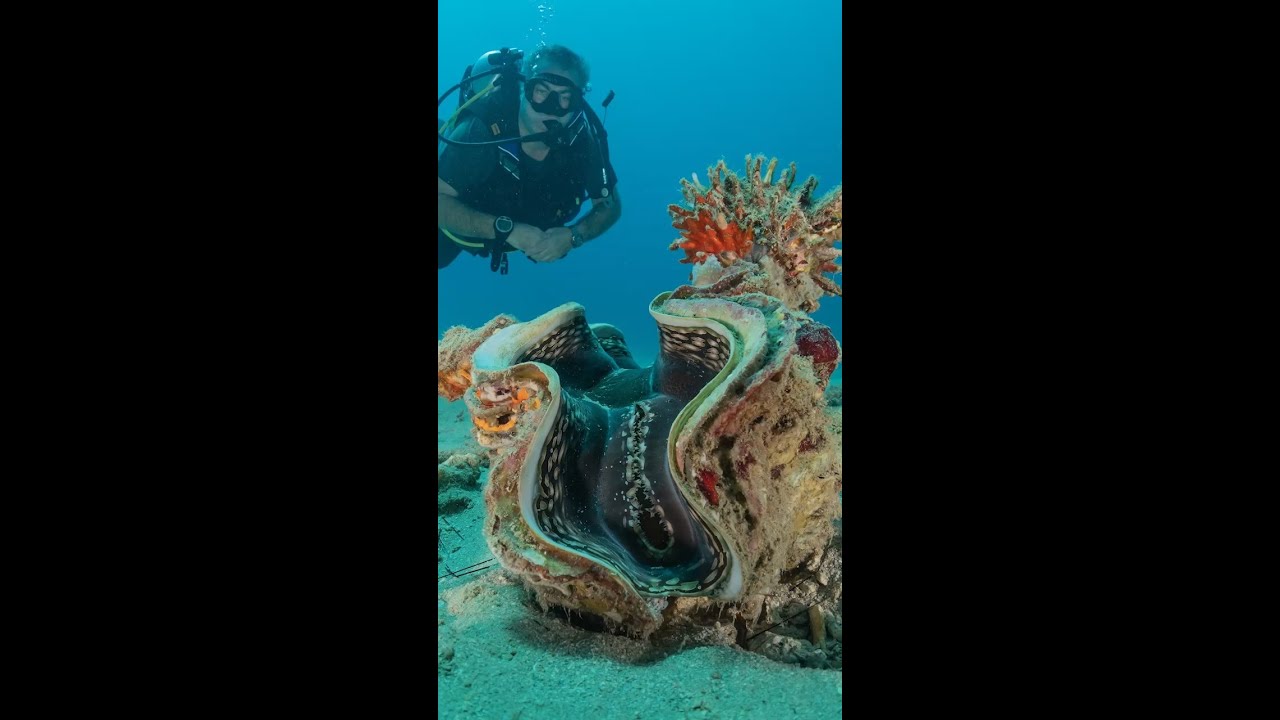- The biology and physical characteristics of Giant Clams, including their symbiotic relationship with algae.
- The ecological role and habitat of Giant Clams in marine ecosystems.
- Conservation status and threats facing Giant Clams, with a focus on human impacts.
- The role of Giant Clams in sustainable aquaculture and conservation efforts.
- Educational and outreach efforts to raise awareness about Giant Clams’ ecological importance.
Giant Clams are among the ocean’s most fascinating and integral inhabitants, captivating with their grandeur and ecological significance. Scientifically known as Tridacna, these bivalve mollusks make their mark in marine biodiversity with their sheer size and symbiotic relationships. Understanding their biology, ecological roles, and conservation needs is crucial for their preservation and the overall health of coral reef ecosystems.
The biology of Giant Clams presents a captivating study of marine adaptation and survival. Growing up to four feet in length and weighing over 500 pounds, they are among the largest living bivalves. Their anatomy features a robust shell comprised of two hinged valves, with vibrant mantles visible when the shells are open, displaying a spectrum of colors from electric blues to iridescent greens. These colors are attributed to the presence of symbiotic algae known as zooxanthellae. Residing within the tissue of the clams, these algae engage in a mutualistic relationship, performing photosynthesis to provide nutrients vital for the clam’s survival. In return, the clam offers protection and exposure to sunlight for optimal photosynthetic activity. This symbiotic relationship enhances the clam’s growth rates and helps sustain coral reef ecosystems, emphasizing its ecological importance.
Ecologically, Giant Clams have a significant role in marine habitats, particularly coral reefs. Found in the warm waters of the Indo-Pacific and parts of the South Pacific Ocean, these creatures contribute to the stabilization of coral reef structures. As filter feeders, they cleanse the water by siphoning plankton and organic particles, enhancing water clarity and promoting reef health. By filtering large volumes of water daily, Giant Clams maintain a balanced nutrient cycle, supporting a diverse array of marine life that relies on healthy water conditions.
Despite their ecological importance, Giant Clams face numerous threats. Human activities, including overfishing and poaching for their meat and shells, pose significant challenges to their survival. Furthermore, the disruption of their habitats by activities such as coastal development and pollution exacerbates their vulnerability. As a consequence of these pressures, several Giant Clam species are listed as vulnerable or endangered. Climate change adds another layer of threat, with rising sea temperatures leading to coral bleaching and habitat degradation, further endangering these giants.
In response to these challenges, sustainable aquaculture and conservation practices have gained traction. Farming Giant Clams offers a viable solution for reducing pressure on wild populations. Aquaculture operations, particularly in countries like the Philippines and Palau, have successfully bred and raised clams for both commercial and restoration purposes. These initiatives focus on repopulating depleted reefs and creating sustainable livelihoods for local communities. By closely regulating harvesting practices and supporting responsible aquaculture, these efforts help balance ecological and economic priorities.
Educational outreach and advocacy are equally vital in raising public awareness about the plight of Giant Clams. Programs aimed at educating communities, tourists, and policymakers highlight the ecological roles and threats facing these animals. Conservation groups and marine parks frequently collaborate with educational institutions to deliver programs that emphasize the importance of marine biodiversity and sustainable ocean practices. Public engagement, leveraging both digital platforms and local community involvement, plays a critical role in fostering a global commitment to marine conservation.
Giant Clams are irreplaceable contributors to marine ecosystems and exemplify the interconnectedness of marine life. Their survival depends on continued research, conservation efforts, and education to mitigate human impacts and safeguard oceanic diversity. By understanding and valuing their ecological roles, society can take meaningful steps towards ensuring their preservation for future generations, marking a collaborative effort to maintain the health and balance of our oceans.
*****
Source Description
The giant clam: the largest living bivalve in the ocean! 🐚❄️ #funfactfriday


